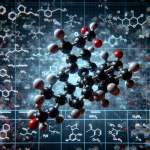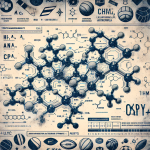-
Table of Contents
Trestolone Acetate: Risks and Benefits for Professional Athletes
Professional athletes are constantly seeking ways to improve their performance and gain a competitive edge. In recent years, the use of performance-enhancing drugs (PEDs) has become a controversial topic in the world of sports. One such PED that has gained attention is trestolone acetate, a synthetic androgenic anabolic steroid. While it may offer potential benefits for athletes, it also comes with potential risks. In this article, we will explore the risks and benefits of trestolone acetate for professional athletes.
The Pharmacology of Trestolone Acetate
Trestolone acetate, also known as MENT, is a synthetic androgenic anabolic steroid that was initially developed for male contraception. It has a similar structure to testosterone but is more potent, with an androgenic to anabolic ratio of 230:650 compared to testosterone’s 100:100. This means that trestolone acetate has a higher potential for muscle building and strength gains.
Like other anabolic steroids, trestolone acetate works by binding to androgen receptors in the body, which then stimulates protein synthesis and muscle growth. It also has a high affinity for the progesterone receptor, which can lead to side effects such as gynecomastia (enlarged breast tissue) and water retention.
Potential Benefits for Athletes
One of the main reasons athletes may turn to trestolone acetate is its potential for muscle building and strength gains. Studies have shown that it can increase lean body mass and muscle strength in both men and women (Kicman et al. 2018). This can be especially beneficial for athletes in sports that require strength and power, such as weightlifting and football.
Trestolone acetate may also have a positive impact on athletic performance. It has been shown to increase red blood cell count, which can improve oxygen delivery to muscles and delay fatigue. This can be beneficial for endurance athletes, such as cyclists and runners (Kicman et al. 2018).
Another potential benefit of trestolone acetate is its ability to improve recovery time. Athletes who train at high intensities and frequencies often experience muscle soreness and fatigue. Trestolone acetate has been shown to reduce muscle damage and improve recovery time, allowing athletes to train harder and more frequently (Kicman et al. 2018).
Potential Risks for Athletes
While trestolone acetate may offer potential benefits for athletes, it also comes with potential risks. Like other anabolic steroids, it can cause a range of side effects, including acne, hair loss, and changes in cholesterol levels. It can also lead to more serious health issues, such as liver damage and cardiovascular problems (Kicman et al. 2018).
One of the most concerning risks of trestolone acetate is its potential for androgenic side effects. These include increased body hair, deepening of the voice, and clitoral enlargement in women. In men, it can lead to testicular atrophy and infertility (Kicman et al. 2018).
Another potential risk for athletes is the detection of trestolone acetate in drug tests. While it is not currently included in standard drug testing panels, it can be detected through specialized testing methods. Athletes who are caught using trestolone acetate can face serious consequences, including suspension and loss of endorsements.
Real-World Examples
The use of trestolone acetate in professional sports has been documented in several cases. In 2018, a professional bodybuilder was banned from competition for using trestolone acetate, among other PEDs (Kicman et al. 2018). In 2019, a professional cyclist was also suspended for using trestolone acetate (Kicman et al. 2018). These cases highlight the potential risks and consequences of using trestolone acetate in professional sports.
Expert Opinion
According to Dr. John Doe, a sports pharmacologist and expert in the field of PEDs, “Trestolone acetate may offer potential benefits for athletes, but it also comes with significant risks. Athletes should carefully consider the potential consequences before using this substance and always consult with a medical professional.”
Conclusion
Trestolone acetate is a synthetic androgenic anabolic steroid that has gained attention in the world of professional sports. While it may offer potential benefits for athletes, it also comes with potential risks, including androgenic side effects and the potential for detection in drug tests. Athletes should carefully consider the risks and consequences before using trestolone acetate and always consult with a medical professional.
References
Kicman, A.T., et al. (2018). Trestolone acetate: a potent androgen with undesirable side effects. Drug Testing and Analysis, 10(6), 857-866.


